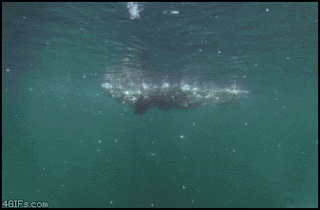Wednesday, January 31, 2018
Symmetrical eyes indicates dyslexia - NEUROSCIENCE
Scientists have found that dyslexics have an unusual pattern of cells in their eyes which makes letters appear back to front.
The proposed cause of dyslexia has mainly focused on the brain.
But scientists have discovered that in those with the condition the central area of the retina may have developed in a way that makes letters difficult to read.
In a study, the researchers found dyslexics had light detecting cells – called cones – arranged in a circular way in both of their retinas.
In people with ‘normal’ reading ability, this circular arrangement is only found in the dominant eye. The less dominant eye had an oval arrangement – which leads to a slightly less good image.
During vision, the brain has to ‘knit together’ the two images – each of which goes to a separate side of the brain. For non-dyslexics, the brain grants priority to the dominant eye for the scene – with the other eye playing a less important role.
In the complex task of visually making sense of the world, the brain generates mirror images of what we see, as well as those the right way round.
But in a dyslexic, both eyes were found to have a symmetrical, circular pattern. This means each eye battles for dominance – causing confusion in the brain and leading to some letters such as ‘b’ and ‘d’ becoming confused.
Journal article:http://rspb.royalsocietypublishing.org/content/284/1865/20171380
Article:https://www.the-scientist.com/?articles.view/articleNo/50676/title/Symmetrical-Eyes-Indicate-Dyslexia/
http://www.dailymail.co.uk/sciencetech/article-4990992/Is-answer-dyslexia-eyes.html
Source: Corina Marinescu
The First Explorer - UNIVERSE
Sixty years ago, on January 31, 1958, the First Explorer was successfully launched by the Army Ballistic Missile Agency on a Jupiter-C rocket. Inaugurating the era of space exploration for the United States, Explorer I was a thirty pound satellite that carried instruments to measure temperatures, and micrometeorite impacts, along with an experiment designed by James A. Van Allen to measure the density of electrons and ions in space.
The measurements made by Van Allen's experiment led to an unexpected and then startling discovery of two earth-encircling belts of high energy electrons and ions trapped in the magnetosphere. Now known as the Van Allen Radiation belts, the regions are located in the inner magnetosphere, beyond low Earth orbit. Explorer I ceased transmitting on February 28, 1958, but remained in orbit until March of 1970.
Image & info via APODhttps://apod.nasa.gov/apod/astropix.html
Image Credit: NASA
Tuesday, January 30, 2018
Brain Responds Differently to Food Rewards in Bulimia Nervosa - NEUROSCIENCE
Findings could contribute to new treatment therapies targeting specific brain pathways
Researchers at University of California San Diego School of Medicine have discovered differences in how the brain responds to food rewards in individuals with a history of bulimia nervosa (BN), an eating disorder characterized by frequent episodes of binge eating followed by efforts of purging to avoid weight gain. The findings further define specific brain mechanisms involved in eating disorders and could help lead to new treatment therapies.
Metabolic (hunger) and hedonic (reward) brain mechanisms both contribute to the regulation of eating. The findings, published July 10 in the Journal of Abnormal Psychology, address the question of whether binge eating in BN results from disruption of one or both mechanisms, or is the product of their interaction.
“Our study suggests that adults with bulimia nervosa may have elevated reward-related brain activation in response to taste. This altered neural response may explain why these individuals tend to remain driven to eat even when not hungry,” said Alice V. Ely, PhD, principal author of the study in the Department of Psychiatry at UC San Diego School of Medicine.
Source & further reading:https://health.ucsd.edu/news/releases/Pages/2017-07-10-brain-responds-differently-to-food-rewards-in-bulimia-nervosa.aspx
Source: Corina Marinescu
Physicists create Star Wars-style 3D projections — just don’t call them holograms — SCI- TECH
They may not technically be holograms, but they're pretty impressive: Researchers have created moving 3D images that are viewable from any angle. The technique, called volumetric display, comes from the lab of Daniel Smalley at Brigham Young University. Smalley's team uses two sets of lasers—one traps and moves a particle around, while the other projects color onto the particle. The particle moves so quickly that our eyes perceive the projection as a solid-line image.
Source & further reading:https://www.nature.com/articles/d41586-018-01125-y
Source & further reading:https://www.nature.com/articles/d41586-018-01125-y
Monday, January 29, 2018
Early Language Development in Fast Motion: How Sounds Become Words during Sleep - NEUROSCIENCE
Babies are exposed to a large amount of stimulation. Since no two situations are exactly the same, for babies every moment is a completely new experience— until the infant brain organizes the flood of stimuli. It has to save new information in long-term memory, to aggregate similar experiences and to categorize them. For these processes, sleep seems to be crucial. Researchers at the Max Planck Institute for Human Cognitive and Brain Sciences (MPI CBS) in Leipzig together with colleagues from other institutions have now discovered that, during sleep, babies can even create word meanings—much earlier than previously supposed.
While babies sleep, fascinating processes take place in their brains. Scientists at the Max Planck Institute for Human Cognitive and Brain Sciences (MPI CBS) in Leipzig observed that six- to eight-month-old babies succeed in creating a meaning for a word—a capability that, until now, has been attributed only to older children and adults. During sleep, the memory for word meanings passes through the same stages as during typical lexical development: So-called protowords that initially associate simultaneously occurring visual and acoustic stimuli become real words that are already bound with meanings.
The scientists investigated these processes by exposing six- to eight-month-old infants to fantasy objects which they gave fantasy names such as “Bofel“ or “Zuser“. Objects that differed only slightly in form and color were given the same names—just as all cats are called “cats” although they differ in their specific features. The researchers chose these fictitious objects to make sure that the young study participants could not use already existing knowledge.
The infants’ brain responses revealed that the babies did not assign new objects of the same category to the corresponding name. That means they did not recognize a new Bofel as a “Bofel” although it was quite similar to the previously seen Bofel versions. For the babies, every new object–word pair was unknown and unique, they did not yet see the general relation between the similar pairs.
This changed after a midday nap. In babies who had napped after the learning phase, the brain differentiated between the right and wrong name for a new object in the subsequent test phase. These babies had generalized their knowledge while sleeping. Babies that had stayed awake could not manage to do so.
Interestingly, the babies developed two different types of knowledge depending on the duration of sleep. After a half-hour nap they showed a brain response that is known from three-month-olds, when these infants associate visual object stimuli with acoustic patterns of words. Thus, during their short nap the babies had filtered out similar features of the objects and had associated them with the sounds of the words. However, similar to the three-month-old babies, they perceived a word only as a sound without meaning.
In contrast, babies who slept for about 50 minutes showed a brain response that was previously known only from older children and adults. The so-called N400 component observed here signals that incongruous meanings are processed in the brain—whether it be in sentences, word pairs, picture stories or object–word pairs. On the basis of this component the researchers realized that the young participants had in fact created meanings of the words.
“Our results show that infants can form long-term memory for word meanings much earlier than previously thought. Even though the brain structures that are relevant for this type of memory are not fully matured, they can already be used to a certain extent”, explains Angela D. Friederici, director at MPI CBS and senior author of the underlying study which has been published in Current Biology.
Journal article:http://www.cell.com/current-biology/fulltext/S0960-9822(17)30807-2
Source:http://www.cbs.mpg.de/sleep-babies-first-associate-words-with-content
Source: Corina Marinescu
Subscribe to:
Posts (Atom)

















































